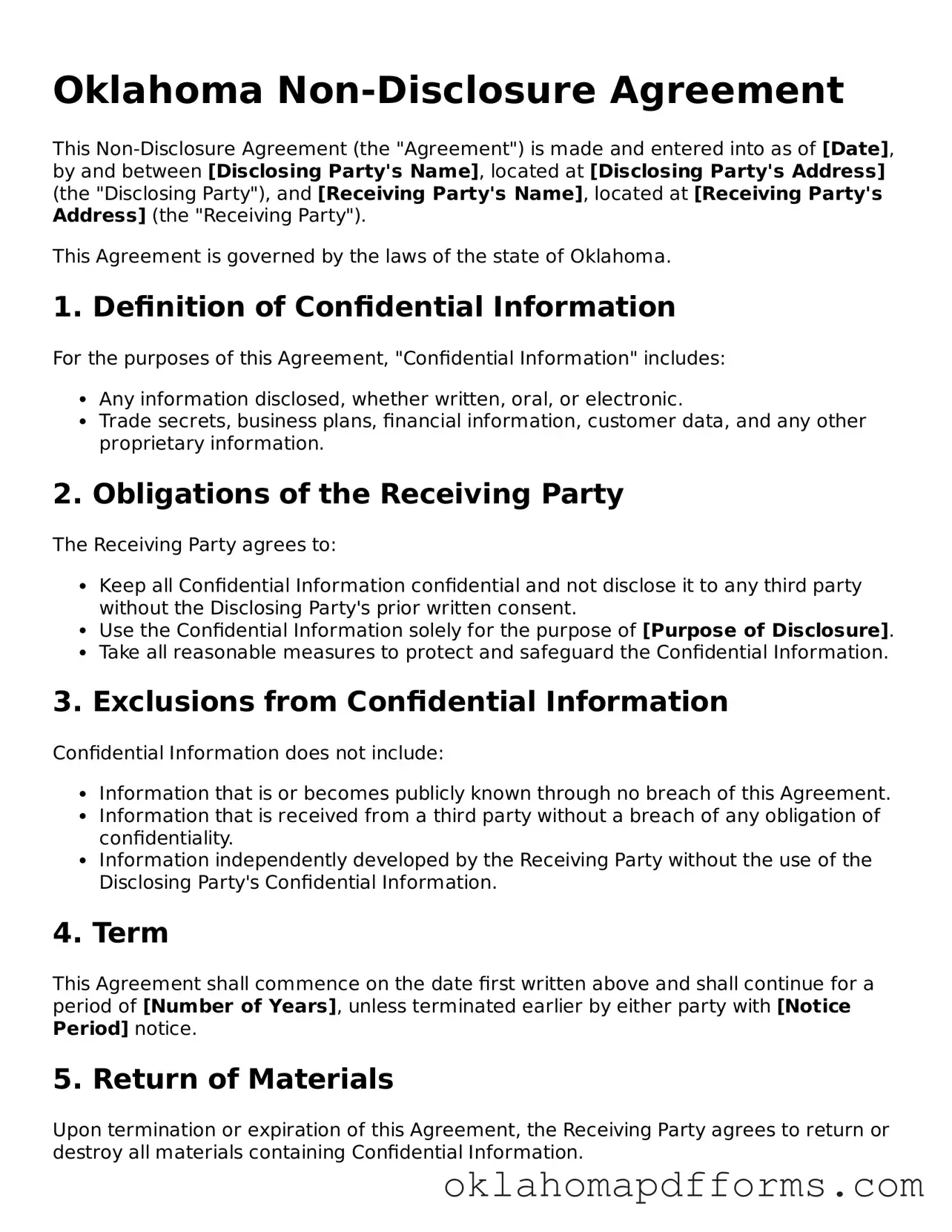Oklahoma Non-Disclosure Agreement
This Non-Disclosure Agreement (the "Agreement") is made and entered into as of [Date], by and between [Disclosing Party's Name], located at [Disclosing Party's Address] (the "Disclosing Party"), and [Receiving Party's Name], located at [Receiving Party's Address] (the "Receiving Party").
This Agreement is governed by the laws of the state of Oklahoma.
1. Definition of Confidential Information
For the purposes of this Agreement, "Confidential Information" includes:
- Any information disclosed, whether written, oral, or electronic.
- Trade secrets, business plans, financial information, customer data, and any other proprietary information.
2. Obligations of the Receiving Party
The Receiving Party agrees to:
- Keep all Confidential Information confidential and not disclose it to any third party without the Disclosing Party's prior written consent.
- Use the Confidential Information solely for the purpose of [Purpose of Disclosure].
- Take all reasonable measures to protect and safeguard the Confidential Information.
3. Exclusions from Confidential Information
Confidential Information does not include:
- Information that is or becomes publicly known through no breach of this Agreement.
- Information that is received from a third party without a breach of any obligation of confidentiality.
- Information independently developed by the Receiving Party without the use of the Disclosing Party's Confidential Information.
4. Term
This Agreement shall commence on the date first written above and shall continue for a period of [Number of Years], unless terminated earlier by either party with [Notice Period] notice.
5. Return of Materials
Upon termination or expiration of this Agreement, the Receiving Party agrees to return or destroy all materials containing Confidential Information.
6. Miscellaneous
The parties acknowledge that:
- This Agreement constitutes the entire agreement regarding the subject matter contained herein.
- This Agreement may only be amended in writing, signed by both parties.
- This Agreement is binding upon and will inure to the benefit of the parties and their respective successors and assigns.
IN WITNESS WHEREOF, the parties have executed this Non-Disclosure Agreement as of the date first above written.
Disclosing Party:
Signature: _______________________
Name: [Name]
Title: [Title]
Receiving Party:
Signature: _______________________
Name: [Name]
Title: [Title]
